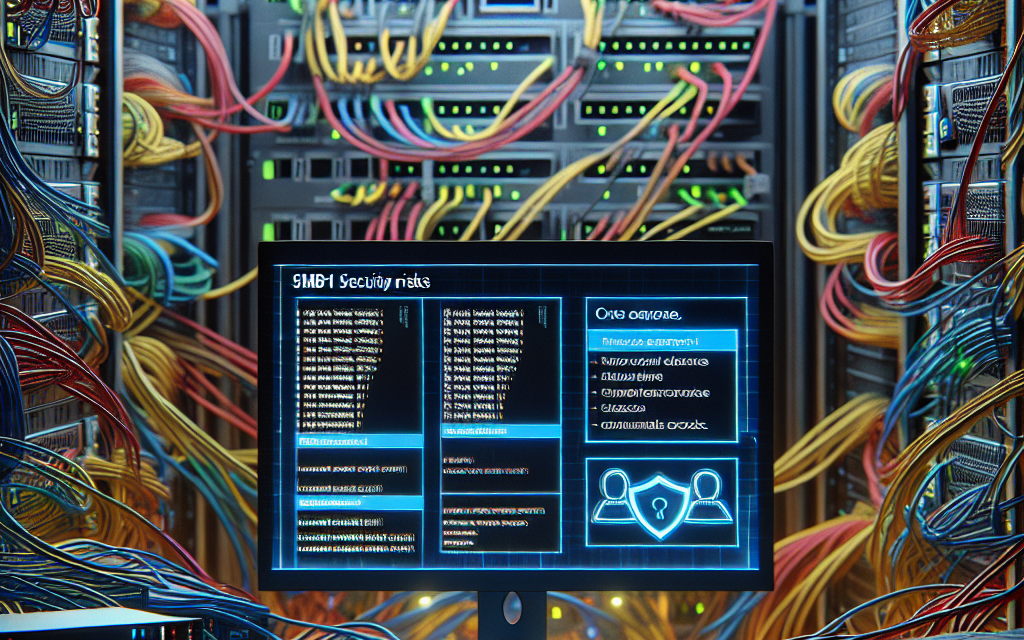Introduction
The Server Message Block version 1 (SMBv1) protocol has long been a critical component of file sharing in Windows environments. However, its age and inherent security vulnerabilities have made it a significant risk in modern IT infrastructures. In this article, we will explore the security risks associated with SMBv1 in Windows Server, the reasons for deprecating this protocol, and the best practices for securing your environment.
What is SMBv1?
SMB is a network file sharing protocol that allows applications to read and write to files and request services from server programs in a computer network. SMBv1, released in the 1980s, was widely used for file and printer sharing in Windows environments. However, its long-standing presence has also made it a target for malicious attacks.
Security Risks of SMBv1
1. Lack of Encryption
One of the most significant vulnerabilities of SMBv1 is its lack of built-in encryption. Data transmitted over SMBv1 can be intercepted and read by unauthorized users, exposing sensitive information such as passwords and confidential documents. Modern versions of SMB (SMBv2 and SMBv3) include encryption mechanisms that better protect data in transit.
2. Vulnerability to Ransomware Attacks
Historically, SMBv1 has been exploited in various high-profile ransomware attacks, including WannaCry. Attackers used vulnerabilities in SMBv1 to spread their malware rapidly across networks, compromising numerous systems before IT departments could respond. Disabling SMBv1 can help mitigate the risk of such attacks.
3. Lack of Support
Microsoft officially deprecated SMBv1 in 2016, and it has continued to stress the importance of migrating to newer versions of the protocol. With the discontinuation of support, any future vulnerabilities identified will not be patched, putting systems still relying on SMBv1 at continual risk.
4. Weak Security Configuration
Many organizations frequently misconfigure SMBv1 settings, leaving their systems vulnerable. Default settings may not offer adequate protection, and older systems may not have the latest security updates, even if they still rely on SMBv1 for functionality.
Reasons to Deprecate SMBv1
-
Evolving Cyber Threats: The cyber threat landscape is continuously evolving, making it critical to use protocols that can withstand modern attack vectors.
-
Compliance Requirements: Many regulatory frameworks require organizations to implement security best practices, including the deprecation of outdated protocols.
- Enhanced Functionality: Newer versions of SMB (v2 and v3) offer better performance, support for larger files, and improved reliability, making them more suitable for modern IT environments.
How to Disable SMBv1 on Windows Server
To enhance your organization’s security posture, it’s essential to disable SMBv1 on all Windows Server installations. Here’s how:
For Windows Server 2016 and later:
- Press Windows + R to open the Run dialog.
- Type
appwiz.cpland hit Enter to open Programs and Features. - On the left pane, click on Turn Windows features on or off.
- Locate SMB 1.0/CIFS File Sharing Support and uncheck it.
- Click OK and restart the server.
Using PowerShell:
- Open PowerShell as an administrator.
- Run the following command to disable SMBv1:
Disable-WindowsOptionalFeature -Online -FeatureName "SMB1Protocol"
After completing these steps, ensure you verify that SMBv1 is disabled by attempting to connect using the protocol or using a network scanner.
Best Practices for Secure File Sharing
-
Use SMBv2 or SMBv3: Configure your environment to exclusively use SMBv2 or SMBv3, both of which offer significant security enhancements over SMBv1.
-
Regular Software Updates: Ensure that your Windows Servers and applications are up-to-date with the latest security patches and updates.
-
Implement Network Segmentation: Limit access to critical servers and data by segmenting your network to reduce potential attack surfaces.
-
Monitor Network Traffic: Use intrusion detection systems (IDS) to monitor network traffic for unusual activity that may indicate an SMB compromise.
- Educate Your IT Staff: Continuous training on current security practices is critical for ensuring that your IT team can identify and mitigate threats effectively.
Conclusion
As we navigate an increasingly complex cybersecurity landscape, it’s imperative for organizations to recognize the risks associated with outdated technologies like SMBv1. By disabling this vulnerable protocol and implementing stronger, more secure alternatives, IT departments can significantly enhance their security posture and protect sensitive data from evolving threats. Transitioning to modern protocols not only improves security but also offers better performance and reliability for file sharing in Windows Server environments.
For further reading and updates on Windows Server security, consider subscribing to WafaTech Blogs. Stay informed, stay secure.





